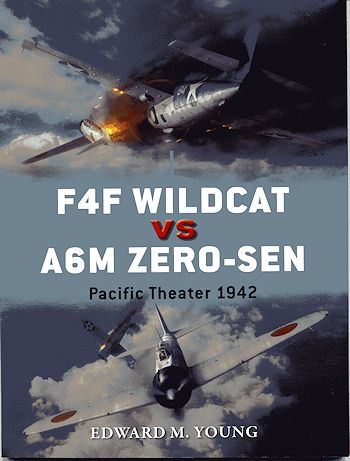 This latest
addition to Osprey's Duel series has two antagonists that are actually pretty
close to having been developed at the same time. Often in this series, one of
the two is newer than the other, which somewhat dilutes the comparison.
This latest
addition to Osprey's Duel series has two antagonists that are actually pretty
close to having been developed at the same time. Often in this series, one of
the two is newer than the other, which somewhat dilutes the comparison. |
Author: |
Edward M Young |
|
Publisher/Distributor |
Osprey Publishing |
|
Price |
$18.95 MSRP |
|
Reviewer: |
|
| Notes: |
80 pages, 7¼ x 9¼ inches, softcover ISBN: 978-1-78096-322-8 |
 This latest
addition to Osprey's Duel series has two antagonists that are actually pretty
close to having been developed at the same time. Often in this series, one of
the two is newer than the other, which somewhat dilutes the comparison.
This latest
addition to Osprey's Duel series has two antagonists that are actually pretty
close to having been developed at the same time. Often in this series, one of
the two is newer than the other, which somewhat dilutes the comparison.
Both aircraft had somewhat checkered initial prototypes. The A6M was saddled with a low performing engine and the F4F had some major design deficiences. The first production aircraft of each type flew within a month of each other. The initial A6M2 model 11 in January 1940 and the first F4F-3 in February of the same year.
The two planes were both carrier aircraft and both powered by twin row radial engines of comparable power. Here the similarities were different. The F4F was designed to be quite rugged in order to handle the difficulties of carrier landings. This meant it was relatively heavy. It also had an inferior landing gear system that was manually operated and put the two main wheels close to each other, making ground looping easier. It was, however, armed with four .50 calibre machine guns that had a high rate of fire and good muzzle velocity. The aircraft was also equipped with pilot armor plating and self sealing fuel tanks.
The A6M, on the other had, was built to meet some rather stringent requirements. As such, the airframe, though strong, was built as light as possible to meet range and speed requirements. This meant that the A6M was lighter, faster, had greater range and superb maneuverability when compared to the F4F. What it did not have was pilot and fuel protection. It was also more heavily armed with two 20mm cannon, based on the German MG/FF. These had good punch if the shells hit, but a slow rater of fire and low muzzle velocity, which meant the A6M pilot had to get close. The other guns were two 7.7 mm rifle calibre machine guns which could punch holes in the airframe, but were not as destructive and often used simply to get good target acquisition for the cannon. The A6M, due to its light weight, could climb like crazy but could not dive as well as the F4F.
This led to quite different tactics. The Japanese pilots hoped for a classic dogfight where their lighter and more maneuverable planes could be put to the best use. The US pilots learned to do diving attacks where they would then zoom back up to altitude to make use of the F4Fs only tactical advantage, its diving ability. The ruggedness of the F4F also meant that more pilots came home in shot up planes, while the A6M tended to burn once its fuel tanks were hit (which is not good).
This book covers the development of each aircraft as well as the various modifications and upgrades made to each type as the war progressed. Both were obsolescent by mid-war, but the Japanese never got the A6M's replacement up and running before the war ended, while the F6F was in battle by 1944. There are the usual stories of pilot exploits on both sides and this book concentrates on the battles of 1942 when they were most likely to meet each other in combat. All of the major carrier engagements are covered to some extent or another with a look at how each type fared against each other.
In all, it is a well written, well illustrated and interesting book that I have no problem recommending to you for an excellent read.
September 2013
For more on the complete line of Osprey books, visit www.ospreypublishing.com. In the US, it is Osprey Direct at 443 Park Avenue South, New York, NY 10016, where you can get a catalogue of available books.
If you would like your product reviewed fairly and quickly, please contact me or see other details in the Note to Contributors.